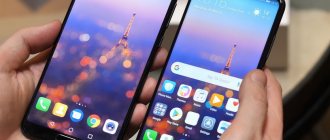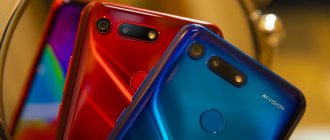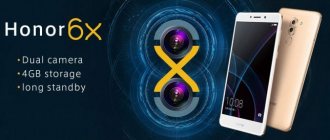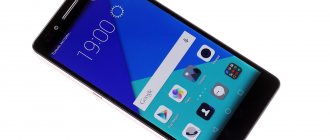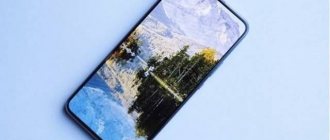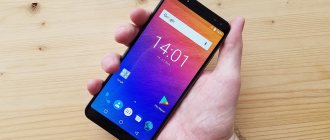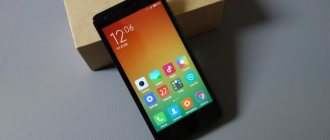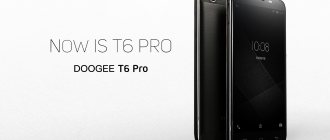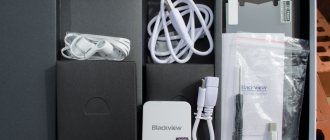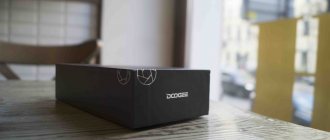A simple trick: we release a flagship, and then a simplified version with the same name, this is a feature of many manufacturers. For example, Samsung sells different Galaxy S minis with flagship indexes (S3 mini, S4 mini, S5 mini), but with very simple hardware. Sony is going the other way: a smartphone of reduced size, gets top-end specifications, not everyone is comfortable with a “spade-shaped” device (Z1 Compact, Z3 Compact). How is Huawei doing? Let’s take the P9 Lite in our hand and let’s try it now.
Plastic design
The P9 Lite turned out to be plastic, not metal, as I expected. More precisely, there is metal on the sides, but I want a lot of iron, like the Honor series. But here the entire back panel is covered with plastic, saving money.
The P9 Lite also has a strangely designed insert at the top where the camera and flash are located. The shiny gloss is combined with the design of the front panel, where the same horizontal stripes run. But the design for my taste is so-so, strange Chinese style.
But the smartphone is not very big, it is well designed for “one-handed” control, you don’t have to get used to its size. The pair of convex side buttons are easy to press and you won’t miss them.
Review of Huawei Honor 9 Lite: design, ergonomics
One of the “features” of Honor 9 Lite, of course, is its appearance, which, perhaps, is not inferior to the flagship.
In the metal-glass “sandwich” of its body, the front and back panels are covered with protective 2.5D glass, which smoothly “flows” onto the aluminum frame around the perimeter. The smartphone is offered in three colors – classic black, as well as blue and gray-silver.
At the same time, for the last two colors, the rear panel with a special thin-film coating has a “mirror reflection” effect, which provides an original play of light on the surface.
An increase in the screen diagonal by half an inch did not lead to significant changes in the dimensions of the Honor 9 Lite, compared to the Honor 9 (our review here), in terms of (151x71.9 mm versus 147.3x70.9 mm). As you can see, the linear dimensions have grown by less than 3 mm. This is exactly the case when a 5.65-inch “tall” screen fits into the body of a regular 5.2-inch device. And all thanks to the new aspect ratio of the display. The weight of the “lightweight” flagship, as if by definition, has become smaller (149 g versus 155 g),
and the thickness of the case has remained virtually unchanged (7.6 mm versus 7.5 mm).
So, the front panel of Honor 9 Lite is covered with protective glass with a 2.5D effect. Above the display, a decorative speaker grille is surrounded by a duo of front cameras, an LED indicator, as well as light and proximity sensors.
On-screen touch control buttons “Back”, “Home” and “Recent applications” are represented by “triangle”, “circle” and “square” icons. Their location can be changed and also supplemented with another icon (for the notification shade).
The “chrome” Honor logo occupies a small plate under the display.
On the right edge of the case there is a volume rocker and a power/lock button that are noticeably different in size.
On the left edge there is a closed combination slot with a tray for two places. They can simultaneously install either two nanoSIMs, or one SIM card and a microSD memory card.
A microUSB connector is placed at the bottom end. Let us remind you that Honor 9 uses a more advanced connector - USB Type-C. To the right of the microUSB (view from the screen side) there is a decorative grille for the “multimedia” speaker (five round holes), while on the left there is a small hole for the “conversational” microphone, and next to it is a 3.5 mm audio headset connector.
The top end of the Honor 9 Lite is empty.
The dual photo module on the rear panel is located closer to its upper left edge. To the right of the horizontally positioned lenses there is a hole for a second microphone (noise reduction) as well as an LED flash. A little lower, and already in the center, there was a place for a round capacitive pad for a fingerprint scanner, slightly recessed into the body.
From the inscriptions at the bottom of the rear panel, decorated with another Honor logo, you can find out the name of the manufacturer, model number and country of production.
The smartphone feels quite comfortable in the hand and is in no hurry to slip out of the palm. However, the Honor 9 Lite includes a clip case that protects the perimeter and back panel of the case. Of course, you can no longer expect a “mirror reflection” effect from a device in a case.
Sensitive scanner
The fingerprint scanner is located on the back, the memory stores up to 5 different fingers. The scanner is fast and accurate, I was left with the impression that no matter how I put my finger on it, the phone still reads the fingerprint correctly.
I know not everyone likes having the scanner in the back. They say that when you need to see notifications, you need to lift the phone from the table and press the fingerprint sensor. You can’t argue with this, although personally it’s not particularly critical for me. But I liked that on the P9 Lite you don’t have to press the scanner hard; it’s not a button like on the iPhone, where you have to press until it clicks. In my opinion, the Chinese have come up with a more technologically advanced option.
In addition, you can use the scanner to scroll through photos, click on it while taking a photo, then it works as a shutter button. Or answer a call, this function is also provided.
Design
The P9 Lite does not receive the now fashionable rounded edges of the protective glass (2.5D). The panel here is flat, framed by a plastic frame, which practically does not protrude above the front surface.
The base of the body is made of metal. But the back is made of matte plastic. In its older brothers, metal is present everywhere. However, it cannot be said that the P9 Lite smacks of cheapness. On the contrary, this is a well-built, high-quality and very pleasant smartphone to use. In two weeks I received a lot of positive emotions from testing this device.
On the back side there is a camera peephole, which is placed in a glass frame. This is exactly what can be adjusted to the definition of 2.5D glass. The lens does not stick out (thanks, Huawei!), the basic information about the camera is nearby, which eloquently tells us that the photo part here is not simple... but golden. However, more on that later.
The fingerprint scanner is located on the back wall of the smartphone. A certain ARM TrustZone technology is used, which allows you to save up to 5 fingerprints and recognizes them quickly and in any position. However, all this has long been the norm. But the sensor’s self-learning ability is a highlight.
When you register a fingerprint, the scanner reads it in just five steps. It would seem that this is very little for correct recognition. No matter how it is!
The scanner works great. In two weeks he made a mistake maybe once or twice.
The unlocking speed is again beyond praise. Of course, I didn’t detect it, but by eye, unlocking takes no more than half a second. Maybe the notorious learning ability is not just a marketing slogan, but a really working technology.
I was also pleased that you do not need to additionally activate the smartphone for it to unlock. He raised his finger and the screen lit up. This is how it should be, and not how it is implemented in the iPhone or Samsung Galaxy S7, when you need to physically press a button.
At the top end there is a 3.5 mm jack for connecting a headset. I am glad that Huawei is not yet ready to experiment and is not going to give up this interface, which is essentially very necessary for modern people.
The developers did not equip the device with USB Type-C, unlike its older brothers P9 and P9 Plus. Perhaps this is even good. You won’t find anywhere else anywhere an extra charge for half an hour.
The multimedia speaker is located on the bottom (to the right of the charging port). It is of high quality and quite loud: on a scale of ten, I would give it 7.5 points, which is very good. On a noisy street the bell can still be heard.
Touch keys here are part of the system - this is both bad and good. It's bad because they eat away part of the useful screen area. It’s good that there is an empty area under the screen, which is very convenient to hold the smartphone in landscape orientation. There are no accidental clicks. In addition, the control panel can be customized to your liking.
Despite the fact that the screen is small (5.2 inches), the developers still provided one-handed control. The interface can be made miniature or simply move the keyboard to the left or right edge as needed.
Strange colors
The screen is bright and the colors scream like it's an AMOLED from Samsung. But no, this is a specifically tuned IPS screen with the usual cold color scheme for Huawei smartphones. If you wish, you can try changing the shades in the settings, it gets better, although not perfect.
Otherwise, everything is fine: a screen with small narrow frames, glass with a good oleophobic coating. Diagonal 5.2 inches, 1920x1080, just like everyone else. For winter or cold seasons, the glove control mode is useful. But in the summer I didn’t have enough brightness reserves outside; under the sun I want to increase it a little more, but I hit a limit.
Display
The device received a 5.2-inch screen, pressed using In-cell technology and based on an IPS matrix. Accordingly, the color saturation is close to natural, the contrast is not raised to eye-watering levels, and the viewing angles are maximum.
In the photo below I compare the screens of our hero and Xiaomi Mi Max (the latter is easy to identify due to its huge diagonal of 6.44 inches). The naked eye can see that the P9 Lite display handles viewing angles more adequately.
For those who like to tweak everything in the world to suit their needs, the menu has color and temperature settings. In my opinion, it is not needed.
Of course, there is a very high-quality oleophobic coating. Fingerprints practically do not accumulate on the surface of the glass, and if this happens, they are easily removed.
Screen sensitivity is very good. For those who are not satisfied with this, they can activate the “With Gloves” mode for even greater screen grip. 10 simultaneous presses are recognized.
More powerful than classmates
Huawei is one of the few manufacturers that produces its own processors. In terms of performance, the phone did not become a leader, but it did not remain an outsider either. The phone will handle modern games, but at medium or even lower graphics settings. The menu works quickly, but if you alternately switch between the browser, the messenger and the racing toy, it is noticeable that this standard is given to the Huawei P9 Lite with effort. For comparison, I took several devices from the same segment. It's nice to see that the new product is more powerful than its competitors.
⇡#Hardware and performance
The smartphone runs on the new Kirin 650 system-on-chip produced by Huawei subsidiary HiSilicon. Essentially, this is an improved analogue of the HiSilicon Kirin 930 chip, which was installed in last year’s flagship model Huawei P8. The 650, like the 930, has eight ARM Cortex-A53 cores: four of them operate at a frequency of 1.7 GHz (in the Kirin 930 - at a frequency of 1.5 GHz) and four more at a frequency of 2 GHz. The chip is made using a 28-nanometer process.
RAM in Huawei P9 Lite can be two or three gigabytes, depending on the version chosen. The smartphone that arrived at our test laboratory turned out to have 2 GB. The volume of built-in flash memory is 16 GB. If necessary, expansion is available using a microSD memory card, but for this you will have to sacrifice the connector for the second SIM card - the slot here is universal.
The level of performance of the Kirin 650 in conjunction with two gigabytes of RAM is quite standard for a mid-priced platform. In the general synthetic test AnTuTu Benchmark 5, the Huawei P9 Lite smartphone scored 47 thousand points. The result is quite acceptable for a device costing 20 thousand rubles - classmates in this test receive similar scores.
The ARM Mali-T830MP2 module operating at 600 MHz is used as a graphics controller. The coprocessor does an excellent job of displaying video in the screen’s native high-definition resolution and quickly rendering images for not very resource-intensive applications. In the light gaming test Basemark 2 Taiji, the gadget showed 58.5 frames per second, that is, it almost hit the vSync limit of 60 FPS.
It is difficult to cope with the “heavier” Huawei P9 Lite toys - the picture begins to slow down, the number of frames per second treacherously drops below the treasured 30 FPS. In gaming benchmarks, he scored lower than his classmates. It is obvious that the Kirin 650 platform is not designed for gamers at all.
During everyday use, the gadget operates smoothly and stably, without slowing down when displaying operating system animations and switching between applications. This is probably due not only to the computing system, but also to the well-debugged Emotion UI software shell. The smartphone copes very well with web surfing, viewing electronic documents, multimedia tasks and navigation. The situation here, by and large, is absolutely standard for a mid-priced gadget. We know of only one exception to this rule - ASUS Zenfone 2.
New Android, old interface
Google made Marshmallow sleek, flat and minimalistic, but the Chinese are customizing the system in their own way. Design themes work here, wallpapers change, and the pictures are chosen very well, there are a lot of them, they are constantly updated on the lock screen when you turn on the backlight. But if you don’t like it, you can put your favorite one and not change anything.
Many additional applications have been added to the shell, but if you do not use the programs, you can easily remove them from the menu. The built-in Health application cannot be deleted, and you shouldn’t do it. The program keeps track of activity, counts steps, energy consumption, and is a good replacement for a fitness bracelet.
In my opinion, Huawei’s interface is one of the best on Android: the system works quickly, there are many settings for designing and decorating the menu, and there are auxiliary functions for cleaning up memory or monitoring harmful programs with viruses. Suddenly I downloaded pirated archives from the Internet!
Huawei Honor 9 Lite review: software features
The Honor View 10 smartphone runs out of the box running the Android 8.0 (Oreo) operating system, the interface of which is hidden behind the proprietary EMUI 8.0 shell. This launcher offers a choice between a regular home screen style (all program shortcuts are collected on desktops) and a style with a separate application menu (screen).
In addition to the control panel with four icon combinations, it is proposed to use the button of the same name for system navigation. This “navigation button” can be easily placed in a convenient place on the screen, while the icons on the control panel can be hidden.
The EMUI 8.0 launcher allows, for example, to activate HD screencast (video recording from the screen, 1280x640 pixels), quickly change the working display size, and also make input easier by moving the virtual keyboard.
A tap and hold on the “Recent Apps” button divides the smartphone screen into two parts to simultaneously display the operation of some pairs of programs (not all). But tapping and holding on the program icon leads to the appearance of an access menu (if supported) with frequently used (up to four) functions of this application. With the next tap and hold, already on the line of the menu that appears, you can move the icon of one of these functions to the main screen. For example, to open the Camera application with the Wide Aperture or Selfie mode activated. Searching for apps, contacts and messages opens by swiping down from the top of the home screen.
According to the passport data, the fingerprint scanner unlocks the smartphone in a quarter of a second. In addition, after registering up to five fingerprints, it is easy to increase the level of security for access to personal folders and applications. At the same time, the scanner’s touch pad will help you answer voice calls, turn off the alarm, open the notification panel, scroll through images, and activate photo or video shooting from the Camera application. Fingerprint registration is not required.
Mono sound
The Chinese have placed holes for the speaker on both sides at the bottom end. Wow, stereo? No, it’s a prop, there’s only one speaker, but the call is clearly audible. The sound in the headphones is not very loud, the headroom is not the largest, but there is no chance of going deaf.
For charging and connecting to a computer, we use the microUSB port on the bottom. NFC was also added to the smartphone for connecting accessories. I note that Wi-Fi only works in the 2.4 GHz band; if there are neighbors with routers around, then living with 5 GHz would be easier. LTE, of course, also works flawlessly.
Navigation is fine, the phone finds the signal quickly, and works stably with GPS/GLONASS satellites. There are also two SIM cards, one in nano format and the other in micro format, which is convenient on vacation - you can buy a local SIM of any format. But if you install a second SIM, you will have to sacrifice a microSD card.
Huawei P9 Lite review: a successful “lightweight” option
The editors would like to thank Huawei for kindly providing the smartphone for review.
With some delay, the “lightweight” Huawei P9 Lite reached the gg . It has not lost its relevance, it has up-to-date technical characteristics, is significantly cheaper than the flagship P9, and the next P10 line will be presented approximately in April (most likely then we can expect a reduction in the cost of the current line).
What is this?
Huawei P9 Lite - a smartphone with a recognizable Huawei design? 5.2-inch FullHD display, fingerprint scanner, 64-bit eight-core processor, 3 GB of RAM, 3000 mAh battery and 13 megapixel camera.
How does it look and assemble?
The design of the Huawei P9 Lite uses fewer "premium" materials than the P9, but it still looks interesting. The shape is recognizable, it is similar to the entire P line from the 6th model (Ascend P1 still resembled the Samsung Galaxy S2). A familiar block with slender straight lines. In front there is a screen, above which is a speaker grid, sensors, a front camera, an LED indicator, below there is only the Huawei logo, no buttons. This is all protected by glass, the model of which is not specified. Most likely Dragontrail. The front surface around the perimeter of the screen is covered with not too noticeable horizontal stripes
The smartphone inherited a metal frame from the flagship. The position of all controls is standard; the volume rocker and power button are located on the left side of the case:
An additional microphone and headphone jack are located at the top:
On the left is a standard hybrid tray that can accept either two SIM cards or one SIM plus MicroSD:
Below are holes for an external speaker and microphone, plastic inserts and the usual MicroUSB instead of the more modern USB-C in the older model:
Almost the entire back surface is made of very high-quality (it feels) plastic with a texture, on top there is a small glossy insert with a camera module:
The main camera with flash is in the upper left corner, the fingerprint scanner is in its usual place (if you take smartphones with a rear-mounted one). It is square in shape with rounded edges and thin edging:
Huawei always places fingerprint scanners on the back panel. This is convenient when removing a smartphone from a trouser pocket, plus the company continues to use it for additional functions. Our smartphone is sold in black and gold colors. The smartphone looks very decent and there are no complaints about the assembly.
How good is the screen?
Huawei P9 Lite has a 5.2-inch IPS display with FullHD resolution without an air gap. There is a good oleophobic coating, the picture is pleasant, the brightness margin is very good, the screen remains readable in bright sunlight. The viewing angles are maximum, at the extreme points the brightness drops noticeably and the picture turns slightly blue:
For those who want to know more
As a result of measurements using a colorimeter, it turned out that the maximum brightness is 401.662 cd/m2, the brightness of the black field is 0.481 cd/m2, the contrast is 835:1, the indicators are very good. Like most modern screens, the smartphone has a slight excess of blue and a lack of red, resulting in a slightly cold picture. Graphs obtained using a colorimeter:
Comparison with competitors:
| Device name | White field brightness, cd/m2 | Black field brightness, cd/m2 | Contrast |
| Huawei P9 Lite | 401.662 | 0.481 | 835:1 |
| Xiaomi Mi 4c | 356.253 | 0.322 | 1106:1 |
| Moto X Play | 449.562 | 0.603 | 746:1 |
| LG G4 Stylus | 306.856 | 0.358 | 857:1 |
| Lenovo Vibe X3 | 457.161 | 0.141 | 3242:1 |
What about performance and autonomy?
Huawei continues to use its own Kirin processors. Mostly in top models, but there are also more modest options. In this case, it is a 64-bit eight-core HiSilicon Kirin 650 ARM Cortex-A53 with two blocks of four cores: 4x2.0 GHz and 4x1.7 GHz, ARM Mali-T830 MP2 is responsible for graphics. Mid-price solution. RAM - 3 GB. The smartphone runs modern games normally and does not heat up well:
The smartphone has only 16 GB installed, this is perhaps the bottleneck of the smartphone, because a hybrid tray is used and the user has a choice: either increase the amount of memory (up to 128 GB is supported), or be content with what is there. As practice shows, this volume is now enough to install the necessary applications, but for those who like to listen to music or play modern games, this is not enough. The smartphone has a Wi-Fi b/g/n module (2.4 GHz only), Bluetooth 4.1 LE, NFC. There were no problems with the operation of the GPS module; it “catches” satellites quickly:
The battery capacity is 3000 mAh. The smartphone plays HD video over the network at medium brightness for more than 7 hours. In normal mode, with 20 minutes of calls, about an hour of games, and regular synchronization of all accounts, the smartphone gets through the day. There are proprietary energy saving modes that add a couple of hours of operation.
For those who want to know more
The smartphone uses a 64-bit 16-nm HiSilicon Kirin 650 processor; it includes eight ARM Cortex-A53 cores: four operating at a maximum frequency of 2 GHz, another four at 1.7 GHz. Graphics accelerator - ARM Mali-T830 MP2 with a frequency of 600 MHz. The amount of RAM is 3 GB. The performance in synthetic tests is quite consistent with the average price range:
Is the interface user-friendly?
The smartphone runs on Android 6.0 Marshmallow with its own EMUI version 4.1 shell:
The shell is optimized from version to version, the appearance is “combed”, minor innovations are added, but it has not changed radically for a long time and can be found in detail in the review of the flagship Huawei P9. All applications are located on desktops, widgets and folders are supported:
The curtain has two separate tabs for notifications and switches, the order of which can be changed:
The panel of navigation buttons can be selected; options with an additional button for calling up the curtain are available:
Simple and clear SIM card management menu:
The settings menu is organized in a standard way, only redrawn differently:
You can register up to 5 fingerprints, the scanner works quickly and accurately:
In addition to blocking, the scanner can be used to perform a number of actions. You can call up/remove the curtain, turn off the alarm, take a photo, scroll through pictures in the gallery:
A simple, clear and nice branded music player. The sound quality is usual for this class of smartphones, the volume reserve is enough to overclock simple headphones. There is an FM receiver:
Pre-installed software, including its own version of the sports application under the clear name “Health”. The functionality is standard: counting steps, distance, calories burned, setting goals:
How are things going with the camera?
The main camera has a resolution of 13 megapixels, a single LED flash, f/2.0 aperture, autofocus. Front camera - 8 MP, f/2.0, fixed focus. There are different shooting modes, including manual. Mode settings are called up by swiping to the right, and the settings of the camera itself - to the left:
The smartphone focuses quickly, and in good lighting it takes really good pictures. Standard Mode:
Bottom line
The “lightweight” Huawei P9 Lite should not be compared with its older brother Huawei P9; these are smartphones from different categories (as evidenced by the very significant difference in price). P9 Lite is a confident representative of the middle class with a nice design and high-quality build, albeit with an abundance of plastic. The P9 Lite has a conveniently sized 5.2-inch high-quality screen, a not top-end but sufficiently powerful processor together with 3 GB of RAM and a fast, functional fingerprint scanner. The shell is, as always, fast, convenient and easy to use. I didn’t like the hybrid tray with 16 GB of internal memory: the user needs to choose between a second SIM and additional memory, which is very useful in the case of the P9 Lite. The price tag is significantly lower than the flagship P9, but there are competitors who can offer more for the same 8,000 UAH.
4 reasons to buy Huawei P9 Lite:
- high-quality, bright screen;
- functional and comfortable shell;
- fast and multifunctional fingerprint scanner;
- nice appearance.
2 reasons not to buy Huawei P9 Lite:
- hybrid tray with 16 GB of internal memory;
- high price tag compared to competitors.
| Technical specifications Huawei P9 Lite | |
| Display | IPS, 5.2 inches, 1920×1080, 423 ppi, without air gap |
| Frame | dimensions 147x73x7.5 mm, weight: 145 g |
| CPU | 64-bit 16nm HiSilicon Kirin 650, 4xARM Cortex-A53, 2.0 GHz + 4xARM Cortex-A53, 1.7 GHz, ARM Mali-T830 MP2 graphics @ 600 MHz |
| RAM | 3 GB |
| Flash memory | 16 GB, MicroSD |
| Camera | 13 MP, F/2.0, LED flash, 8 MP front camera |
| Wireless technologies | Wi-Fi 802.11 b/g/n, Bluetooth 4.1, NFC |
| GPS | GPS, Glonass |
| Battery | 3000 mAh, non-removable |
| operating system | Android 6.0 Marshmallow + EMUI 4.1 |
| Sim card | 2x nanoSIM |
Opinion
At the presentation of the smartphone in Russia, I was pleasantly surprised by the price - 19,990 rubles, I thought that it would cost more. Huawei P9 lite is a good example of how to make a mid-class model that is adequate in terms of characteristics and price. The latest version of Android, a convenient and fast shell, nice little things like NFC or two slots for SIM cards of different sizes.
Huawei P9 Lite wants to look like the older model, but in fact it has simpler hardware, plastic in the body and not such outstanding photo capabilities. But everything is justified by the twofold difference in price.
Software and multimedia
The software platform uses Android OS version 7.0 with the proprietary EMUI 5.1 shell, which is currently the latest version of the interface for Huawei mobile devices. The capabilities of the EMUI shell, used in all modern mobile devices of the manufacturer, have been well studied by us and have been described in detail more than once in reviews.
Among the features: the EMUI 5.1 interface studies user habits and predicts their behavior. The developers claim that over time this improves the speed of opening applications. Launcher offers two options for displaying the workspace, with and without a menu of installed applications. In the settings menu, an additional panel now slides out on the side, and the proprietary timeline has disappeared from the notification panel.
There is a two-window mode and the ability to reduce the size of virtual keyboards. That is, in principle, the organization of the proprietary shell has become as close as possible to the pure Android interface. There are very few additional programs: only a comprehensive phone manager, a file manager and the HiCare health monitoring program.
To listen to music, you use your own player. Previously, there were no manual settings at all, now there is a Huawei Histen audio effects section in which you can turn on the 3D sound effect and choose from equalizer presets. But all this becomes available only with connected headphones.
The Honor Purity equalizer, by the way, was developed in partnership with Monster. In headphones, the smartphone sounds high quality, the sound is loud, clear, thick and rich. The loudspeaker also sounds good, but, naturally, produces a simpler sound. The microphone has good sensitivity, but the smartphone does not have a built-in FM radio.
About wireless interfaces
Continuing our review, we note that the Huawei P9 LiteLTE can install two Nano-SIM format SIM cards. By the way, the second slot is combined with a memory card slot. There is only one radio module in a smartphone. All types of mobile communications and LTE work great - the phone easily connects to the network and there are no connection dropouts.
It should also be noted that a modern 802.11 Wi-Fi module is installed here, which supports all modern a/b/g/n protocols. In addition, a modern Bluetooth module version 4.1 with A2DP support is installed here. Also, the phone has an NFC module for contactless payments. In addition, this version, which supports LTE, has all the necessary modern sensors:
- illumination;
- position in space;
- microgyroscope;
- pedometer;
- compass;
- accelerometer
In general, in this regard, the technical equipment of the smartphone can be called excellent. Also, there is GPS and support for the GLONASS system. The device finds satellites quickly.
Sound quality
Let’s move on to the indisputable advantage of the new product – the sound, which is what deserves the attention of users. The phone has a modern audio processor and a powerful speaker that provide bright and rich playback.
Moreover, the quality does not change both when playing on the main speaker and when using headphones. We also did not find any comments regarding the earpiece and microphone; you will recognize the iconic timbre of the voice from the first word, and there are also no noises during a conversation.
